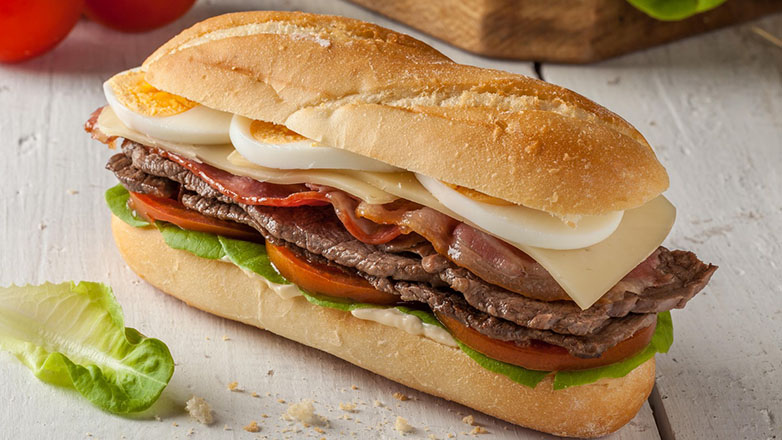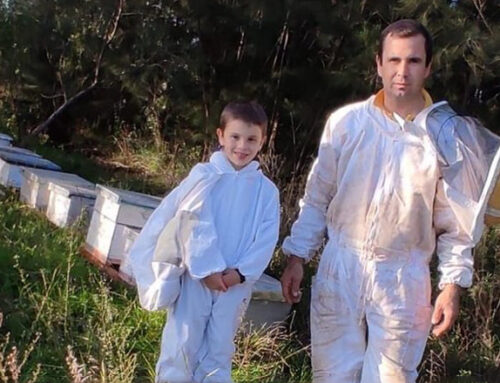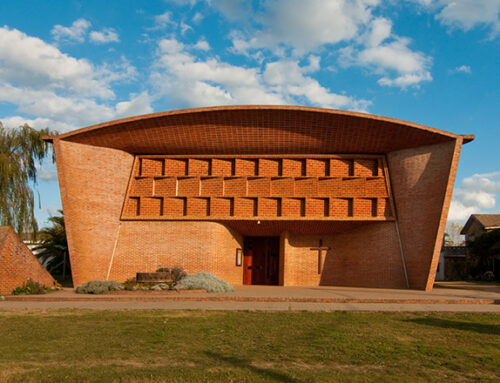The chivito is a uniquely Uruguayan sandwich. The English translation of the dish is “little goat,” but the recipe doesn’t call for the namesake ingredient.
Culture Trip speaks with Uruguayan chef Martín Lavecchia to learn how to recreate the famous hearty classic Uruguayan dish at home.
A chivito always consists of a slice of beef, but the toppings can vary from ham and a fried egg to everything but the kitchen sink. It’s not unusual to order a chivito stacked high with lettuce, tomato, mozzarella, bacon, olives, bell peppers, hearts of palm, mushrooms and more. To make it even heartier, it’s almost always served with a large portion of french fries. Here’s how Uruguayan chef Martín Lavecchia makes this classic dish.
How does the chivito represent Uruguayan cuisine?
The chivito is an indisputable classic of our cuisine. We identify with that dish in terms of our culture and gastronomic history. In Uruguay, there are few national dishes, and the chivito is one of the most important. I believe every Uruguayan has tasted the chivito at least once in his life. It’s a popular dish that everyone likes and is accessible to everyone. It’s fast food, but with fresh and tasty ingredients.
Can you tell us the story of how the chivito came to be?
The sandwich first appeared in a restaurant, El Mejillón, in Punta del Este, Uruguay, in the 1940s. The story goes that one night a patron arrived requesting a meal of goat meat. The owner, Antonio Carbonaro, had a golden rule that no one left his establishment without being attended to. So, although he had no goat meat, he quickly tried to find the solution so that the client didn’t leave without eating. He put together the first chivito. The woman fell in love with the dish, and it became an undisputed classic. El Mejillón sold more than a thousand of these per day, and as time went by, it became popular throughout the country.
What about the chivito makes it so national?
The chivito is a national dish with such an interesting history behind it is the first factor that influences its importance. Because of the way of preparation and the flavors of the dish, I think it corresponds a lot with the style of food that most people enjoy in Uruguay. Here, we eat a lot of milanesa [breaded, pan-fried meat], meat and french fries – this chivito has all of that in one dish.
Before we start cooking, what makes your interpretation of a chivito unique?
My interpretation is from sensory memory; I try to transmit the soul of the chivito but keep the traditional guidelines of the dish, such as the bread and key ingredients. Caring for the raw materials while balancing between ingredients is the way to pay homage and recognize the inventors of the chivito.
What is your secret to a perfect chivito?
Pay attention to the potatoes. You don’t have to have a huge plate of french fries. A small amount prepared correctly will be perfect. I double cook them in a confit style – slowly at a low temperature. As a final step, I brown the french fries on the stovetop in a pan to achieve an ideal flavor and texture.
What you’ll need
It’s time to get cooking. According to chef Lavecchia, these are the ingredients you’ll need to prepare an authentic Uruguayan chivito at home. This recipe is for four servings.
For the chivito
1 baguette, sliced into 4 portions and cut lengthways
4 leaves of curly lettuce
1 tomato, sliced
4 thin beef tenderloin fillets
4 slices of smoked ham
4 slices of mozzarella cheese
4 eggs
1 onion, julienned
Virgin olive oil
Salt
Pepper
For the mayonnaise
1 egg
1 clove of garlic
Sunflower oil
Salt
For the french fries
2 large red potatoes
Rosemary
Thyme
Salt
Pepper
Method
• Wash 4 crisp lettuce leaves and set aside.
• Cut the tomato into thin slices.
• Fold the ham and cheese slices together in the form of booklets.
• Make the garlic mayonnaise. Place the egg, garlic and salt in a container suitable for a mixer (taller than it is wide). Add a thread of oil while mixing until emulsified. Place the mayonnaise in the refrigerator.
• Make the french fries. Peel the potatoes and cut them into sticks. Place them in a pan and cover them with oil. Add rosemary, peppercorns and salt to taste. Bake in the oven at 180C (350F) until they’re at your desired crispiness. Remove them from the oven and place them in a pan with a little oil to brown them.
• Now, it’s time to make the rest of the items for the plate. Prepare the eggs sunny side up on the griddle. Cook them so that the white part sets, but the yolk remains runny. Season as desired and remove.
• Place the beef tenderloin fillet in the hot griddle for five minutes. Remove and set aside.
• Cook the julienned onion in the hot griddle until lightly browned. Remove and set aside.
• Place the ham and cheese booklet in the hot griddle for two minutes. Remove and set aside.
• Assemble the chivito. Cut the bread and toast it in the oven. Cover the slices of crispy bread with the garlic mayonnaise. Then place the lettuce, tomato, beef, onion, ham and cheese booklet, and finally the egg. Serve with the potatoes and eat right away.
Meet the chef
Chef Martín Lavecchia is an Uruguayan chef who trained and worked at Michelin-star restaurants in Barcelona for several years. He brought his talents back to his native Uruguay at his upscale dining establishment, FOC, which specialized in a five-course dinner tasting menu. He’s now working on developing a new dining experience, which will debut soon. Lavecchia is a gifted chef known for his ability to maximize raw, fresh ingredients while emphasizing careful preparation, inventive cooking techniques and playful plating.
Written by Lola Mendez for Culture Trip





